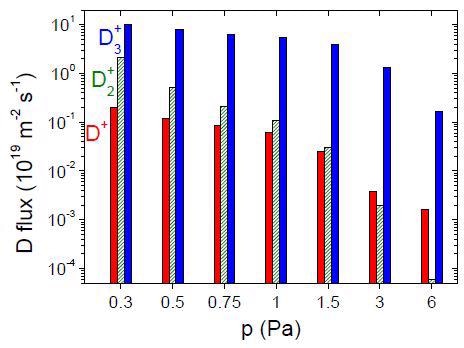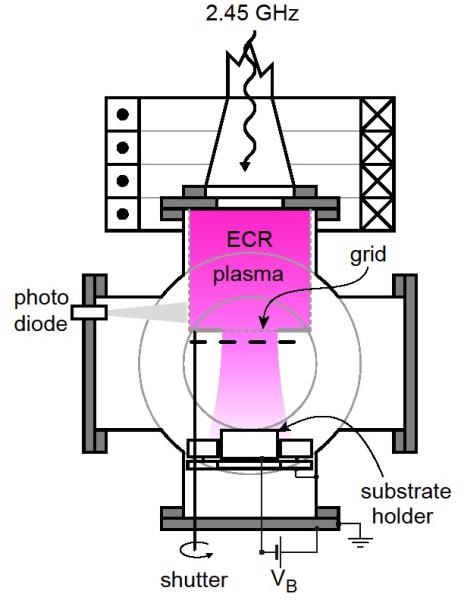Technical processes like thin-film deposition and etching, and surface modification extensively use plasma discharges. Hence, it is important to quantitatively characterize plasma sources for understanding plasma sources and technologically optimizing the process.
A specific role is played by hydrogen plasmas in technical discharges, such that an accurate measurement of the absolute hydrogen fluxes to a plasma-treated surface is highly preferred. This is essential for gaining insight into the discharge mechanism and the plasma-induced processes at the surface.
Experimental Procedure
A custom-designed electron-cyclotron-resonance (ECR) plasma source with a biased sample holder was characterized with regards to the deuterium fluxes impinging on the substrate holder.
A HIDEN plasma monitor (Model HIDEN EQP 300) was used to determine the mass distribution of the impinging ions. It was possible to determine the flux arriving at the usual sample position using the plasma monitor that was mounted in a mock-up sample holder. The experimental setup is shown in Figure 1.

Figure 1. Schematic view of the experimental set-up. To quantify the particle flux to the substrate the substrate holder is replaced by a mock-up containing the EQP plasma monitor (not shown)
The mock-up sample holder was built using soft iron to shield the plasma monitor from the magnetic field required for the ECR discharge. Another soft iron shielding cylinder was arranged surrounding the ion optics of the plasma monitor.
In order to maintain a pressure of 10-7 to 10-6 Pa at the time of operation, the plasma monitor is differentially pumped. The mock-up sample holder’s aperture size was 10µm. A retarding field analyzer (RFA) was used for absolute quantification of the mass-integrated ion flux to the sample holder.
Experimental Results
Figure 2 shows the resulting ion fluxes impinging on the substrate holder for a microwave power of 144 W as a function of operating pressure in the 0.3 to 6 Pa range. At the lowest tested pressure of 0.3 Pa also, D3+ is the prominent ion species hitting the sample surface. An ion-molecule reaction in the bulk plasma is the dominant production pathway for this ion.

Figure 2. Ion-species-resolved deuteron flux as a function of the D2 gas pressure, measured at a constant microwave input power of 144 W and with the sample holder at floating potential
A D2+ ion and a D2 molecule collide to produce a D3+ and a D atom. The possibility of this reaction increases with increasing pressure so that the relative ion species’ composition changes. With a high pressure, more and more D3+ ions are produced at the expense of the primary D2+ ion produced in the bulk plasma by electron-induced ionization of D2 molecules. When the pressure is higher than around 1.5 Pa, there is a decrease in the total target current because of a decrease of the plasma density but the contribution of D3+ continues to increase.
At the highest pressure (6 Pa), the D2+ contribution is almost negligible below 10-3. There is no significant change in the D+ fraction, in contrast to D2+. Similar to D2+, D+ is produced by electron- induced ionization of D2 molecules and further by direct ionization of atomic D (D plasma concentration is about 1 %). However, the cross section for an ion molecule reaction of D + is lower than that of D2+.
The total deuteron flux in the form of ions for specific operating parameters of the plasma source such as a D2 plasma at p = 1.0Pa, PMW = 144 W, and the sample holder at floating potential, is 5.6x1019 Dm-2. This corresponds to a total ion flux of 1.9x1019 m-2.
It is observed that the percentage concentration of D+3, D+2 and D+ are 94%, 3% and 3%, respectively. There is monotonic increase in ion flux by a factor of 2 in case the DC bias voltage is increased to -600 V.

This information has been sourced, reviewed and adapted from materials provided by Hiden Analytical.
For more information on this source, please visit Hiden Analytical.